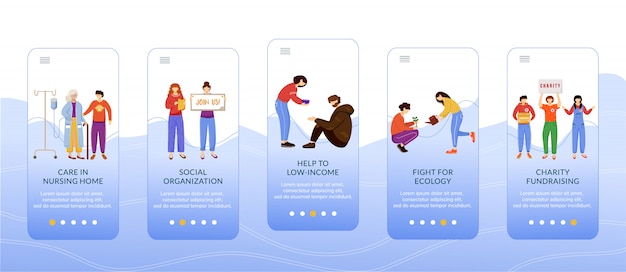Maximize Your Benefits: Dependent Care FSA Before Year End

The Dependent Care FSA allows you to set aside pre-tax money for eligible dependent care expenses, such as childcare, enabling you to save on taxes while ensuring your loved ones are cared for; you can claim up to $5,000 in tax-free benefits.
Are you taking full advantage of your employee benefits? The
If you have dependents requiring care, understanding and utilizing a Dependent Care Flexible Spending Account (**Dependent Care FSA**) can significantly reduce your taxable income while ensuring your loved ones receive the care they need.
Understanding the Dependent Care FSA
The Dependent Care FSA is a pre-tax benefit account used to pay for eligible dependent care services. It’s designed to help working parents and guardians afford quality care for their children or other qualifying dependents, allowing them to work or attend school.
Eligibility for a Dependent Care FSA
To be eligible for a Dependent Care FSA, you must meet certain criteria. Understanding these requirements ensures you can maximize this valuable benefit.
- You must be working or attending school.
- Your spouse, if you are married, must also be working, attending school, or be incapable of self-care.
- The dependent must be either under age 13 or incapable of self-care, regardless of age, and must live in your home for more than half the year.

Eligible Expenses Under a Dependent Care FSA
Knowing what expenses qualify under a Dependent Care FSA is crucial for effective planning. Here are some common eligible expenses:
- Childcare expenses for children under 13, including daycare, preschool, and before- and after-school programs.
- Summer day camps that allow you (and your spouse, if married) to work or look for work.
- Care for a disabled spouse or other dependent incapable of self-care.
In summary, the Dependent Care FSA enables eligible individuals to set aside pre-tax funds for necessary dependent care, offering significant financial relief.
Benefits of a Dependent Care FSA
The advantages of a Dependent Care FSA extend beyond simple financial savings. They include reducing taxable income and enabling better household budget management.
Tax Savings with a Dependent Care FSA
One of the most significant benefits of a Dependent Care FSA is the tax savings. By setting aside pre-tax money, you reduce your taxable income, leading to lower tax liability. The money you contribute isn’t subject to federal income tax, Social Security tax, or Medicare tax. This can result in substantial savings over the year, especially for families with high childcare costs.
Consider this: a family contributing the maximum amount of $5,000 to a Dependent Care FSA could save between $1,000 and $2,000 in taxes, depending on their tax bracket. This can greatly offset the cost of childcare and make high-quality care more accessible.
Budgeting and Financial Planning
Using a Dependent Care FSA also helps with budgeting and financial planning. By estimating your dependent care expenses for the year and setting aside funds accordingly, you can better manage your household budget. The set amount deducted from each paycheck provides predictability and control over your finances.
- Allocate Funds: Decide on the amount to allocate based on estimated expenses.
- Manage Cash Flow: Enjoy consistent paycheck deductions for predictable budgeting.
- Minimize Tax Impact: Lower taxable income and optimize financial strategies.

In conclusion, a Dependent Care FSA not only saves you money on taxes but also aids in better budgeting and financial planning, providing considerable peace of mind.
How to Enroll in a Dependent Care FSA
Enrolling in a Dependent Care FSA is typically straightforward but requires careful planning and awareness of deadlines. Here’s what you need to know:
Understanding Enrollment Periods and Deadlines
Most employers offer enrollment in a Dependent Care FSA during their annual benefits enrollment period, which usually occurs in the fall. This is the time when you can elect to participate in the FSA for the upcoming year. It’s crucial to understand the enrollment deadlines, as you generally cannot enroll outside of this period unless you experience a qualifying life event.
Qualifying life events that may allow you to enroll outside the annual enrollment period include:
- Marriage
- Birth or adoption of a child
- Change in employment status
- Loss of other coverage
Steps to Enroll in a Dependent Care FSA
Enrolling in a Dependent Care FSA typically involves the following steps:
- Review Your Employer’s Benefits Package: Understand the terms and conditions of your employer’s Dependent Care FSA.
- Estimate Your Expenses: Calculate your expected dependent care expenses for the upcoming year.
- Enroll During the Enrollment Period: Complete the necessary forms and submit them by the deadline.
- Make Your Elections: Decide how much to contribute to your FSA, up to the maximum allowed by law ($5,000 for single individuals or married couples filing jointly).
Tips for Estimating Your Expenses
Estimating your dependent care expenses accurately is essential to avoid overfunding or underfunding your FSA. Here are some tips to help you:
- Review Past Expenses: Look at your previous year’s dependent care costs to get an idea of what to expect.
- Consider Changes in Circumstances: Factor in any anticipated changes, such as a new daycare provider, increased hours, or changes in your dependent’s needs.
- Be Realistic: It’s better to overestimate slightly than to underestimate, as any unused funds may be forfeited at the end of the plan year (use it or lose it rule).
In summary, enrolling in a Dependent Care FSA involves understanding enrollment periods, completing necessary steps, and accurately estimating expenses to maximize benefits.
Maximizing Your Dependent Care FSA Contributions
Effectively using your Dependent Care FSA involves understanding contribution limits, managing expenses, and knowing how to claim reimbursements. Proper planning can help you maximize the benefits.
Understanding Contribution Limits
The IRS sets annual contribution limits for Dependent Care FSAs. For 2024, you can contribute up to $5,000 per household if you’re single or married filing jointly, or $2,500 if you’re married filing separately. These limits are designed to help families offset the costs of eligible dependent care expenses.
It’s crucial to stay within these limits when planning your contributions. Exceeding the maximum can lead to tax penalties. Conversely, not contributing enough can mean missing out on potential tax savings.
Managing Your Qualified Expenses
Effectively managing your qualified expenses involves tracking all eligible costs and understanding what expenses qualify. Here are some strategies to help you manage your expenses:
- Keep Detailed Records: Maintain receipts and documentation for all dependent care expenses.
- Understand Eligible Expenses: Be clear on what types of care qualify. This includes daycare, preschool, before- and after-school programs, and summer day camps.
- Plan Ahead: Forecast your expenses for the year to align with your contributions.
Claiming Reimbursements
Claiming reimbursements from your Dependent Care FSA is usually a straightforward process, but it’s important to follow your employer’s or plan administrator’s guidelines. Generally, the process involves:
- Submitting Claims: Filling out a claim form with details of the expenses and attaching supporting documentation.
- Providing Documentation: Including receipts or invoices from the care provider.
- Following Deadlines: Adhering to the FSA’s deadlines for submitting claims, typically requiring claims to be submitted by a specific date after the plan year ends.
In conclusion, maximizing your Dependent Care FSA involves staying within contribution limits, carefully managing qualified expenses, and following the correct procedures for claiming reimbursements.
Common Mistakes to Avoid with a Dependent Care FSA
While a Dependent Care FSA offers many benefits, it’s essential to avoid common mistakes that can lead to loss of funds or other issues. Being aware of these pitfalls can help you make the most of your FSA.
Overestimating or Underestimating Expenses
One of the most common mistakes is either overestimating or underestimating your dependent care expenses. Overestimating can result in unused funds that you may forfeit at the end of the plan year due to the “use-it-or-lose-it” rule. Underestimating, on the other hand, can leave you short on funds to cover your expenses.
To avoid these issues:
- Review Past Expenses: Analyze your previous years’ spending to get a realistic estimate.
- Consider Future Changes: Account for any anticipated changes in your care arrangements or costs.
- Adjust as Needed: If your plan allows, make adjustments to your contributions during the year if your circumstances change.
Missing Deadlines for Claims
Another common mistake is missing the deadlines for submitting claims. FSAs typically have strict deadlines for submitting reimbursement requests, and failure to meet these deadlines can result in forfeited funds. It’s crucial to keep track of these dates and submit your claims promptly.
Tips to avoid missing deadlines:
- Mark Important Dates: Note the deadlines on your calendar and set reminders.
- Submit Claims Regularly: Don’t wait until the last minute to submit your claims. Do it regularly to ensure you don’t miss the deadline.
- Organize Documentation: Keep all receipts and documentation organized and easily accessible.
Using Funds on Ineligible Expenses
Using your FSA funds on ineligible expenses is another mistake to avoid. The IRS has specific guidelines on what expenses qualify for reimbursement, and using funds on non-qualified expenses can lead to penalties or denial of claims.
To ensure you’re using your funds correctly:
- Know Eligible Expenses: Be familiar with IRS guidelines and your FSA’s terms and conditions regarding eligible expenses.
- Document Everything: Keep detailed records and receipts for all expenses.
- Consult with Your Provider: If you’re unsure whether an expense qualifies, consult with your FSA provider or administrator.
In summary, avoid common mistakes by carefully estimating expenses, adhering to claim deadlines, and ensuring all expenses are eligible under IRS guidelines.
Strategies for Year-End Dependent Care FSA Planning
As the year draws to a close, it’s crucial to strategize how to best utilize your Dependent Care FSA funds. Effective planning can help you avoid losing money and ensure you maximize the benefits available to you.
Reviewing Your Account Balance
The first step in year-end planning is to review your current Dependent Care FSA account balance. Understanding how much you have left can help you determine the best course of action for the remaining weeks of the year.
To review your balance:
- Check Online: Access your FSA account through your employer’s benefits portal or the plan administrator’s website.
- Contact Customer Service: Call the FSA customer service line for assistance.
- Evaluate Expenses: Compare your remaining balance with your expected expenses for the rest of the year.
Spending Down Remaining Funds
Once you know your balance, it’s important to develop a plan to spend down any remaining funds before the year ends. Here are some strategies to help you:
- Schedule Additional Care: If possible, schedule extra daycare or after-school care for your child.
- Utilize Backup Care: Employ a backup caregiver if your regular provider is unavailable.
- Plan for Summer Camps: If your plan allows, prepay for summer day camp programs that qualify.
Understanding Grace Periods and Carryover Options
Some Dependent Care FSAs offer a grace period or a carryover option, which can provide additional flexibility. Understanding these options is crucial for effective year-end planning.
- Grace Period: A grace period allows you extra time (typically 2.5 months) after the end of the plan year to incur expenses.
- Carryover Option: A carryover option permits you to carry over a certain amount of unused funds (up to $610 as of 2023) to the following plan year.
In conclusion, effective year-end planning for your Dependent Care FSA involves reviewing your account balance, strategizing to spend down remaining funds, and understanding grace periods and carryover options.
| Key Point | Brief Description |
|---|---|
| 💰 Tax Savings | Reduce taxable income by setting aside pre-tax funds for dependent care. |
| ✅ Eligibility | Must be working/studying; spouse must work/study/be unable to self-care; dependent under 13 or unable to self-care. |
| 📝 Enrollment | Enroll during annual period; estimate expenses; manage deadlines. |
| 📅 Year-End Planning | Review balance; spend funds; understand grace periods/carryover. |
What expenses are eligible for reimbursement?
Are childcare costs for children under 13, daycare, preschool, and summer day camps considered as expenses valid for the DCFSA. It is important to verify all expenses to be eligible.
Does my spouse have to work for me to be eligible?
Yes, the spouse has to be working, be in school, or disabled to be considered eligible. This is one of the requirements for the DCFSA.
Are there any limits to DCFSA?
There is a limit of $5,000 for single individuals or married couples that file jointly.
How do I enroll in a DCFSA?
Review the benefits package for the employer to understand the terms and the conditions of the DCFSA. Then you will need to calculate the expenses for the year and enroll in the period.
What happens if I don’t use all of the money left in the DCFSA?
Depending on the plan, there may be a grace period. if not, the carryover allows a certain amount of money to be used the following year.
Conclusion provides a pivotal financial reprieve for working families. Through tax savings, it creates a way of enhancing one’s financial planning.





